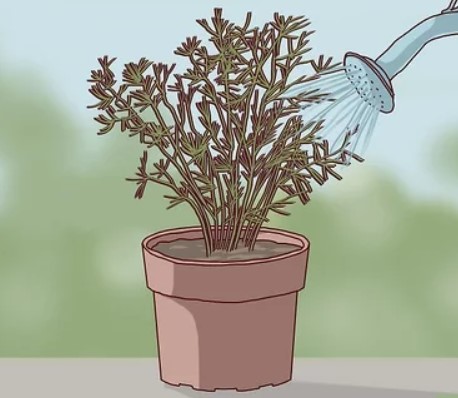Asparagus ferns are plants that are used to add texture to your garden. It is ornamental and can be used as a houseplant as well. These are trimmed every three years, but you can also cut them once a year, depending upon the growth you like. Their leaves can be sharp and are called cladophylls. They can even produce some tiny white flowers and red berries on the top of the leaves.
You can plant them directly in the ground or the plant pots, keep them inside or outside the house; it all depends on your choice. They require a little aid in growing those fresh green leaves. Asparagus ferns also have some medicinal benefits. They were used to treat heart problems in ancient times.
Contents
How and When to Fertilize Asparagus Fern?
These are very adaptive in nature. They can grow in hot summer weather and can do fine in winters as well. Like every other plant, asparagus ferns also need fertilizers for their healthy growth. Fertilizers help the plant to grow properly. They provide enough nutrients which are required for the growth of important parts of the plants. We have written all the necessary information you need about the fertilizers for these ferns.
How to Fertilize?
The asparagus ferns grow best in humid climates. They should be kept in temperatures below 70 degrees Fahrenheit. The summer and spring is the best time for these ferns to grow. The fertilizers should be mixed with equal parts of water and then planted in the pots. When mixed with water, the asparagus can easily absorb the nutrients. The water here acts as a carrier in plants to carry the nutrients upwards from the soil.
When to Fertilize?

Plants are fertilized according to their type and requirement. The asparagus ferns are fertilized every week in the summer and spring seasons. In winters, a monthly feeding would be enough for them. The fertilizers should be mixed with water if the soil is dry. If planted in pots, more fertilizers are used because the garden has very little nutrients. When planted in pots, enough space should be left so that air can reach the roots.
Best Fertilizers
Many types of fertilizers are available in the market. Some of them are liquid, while the others are dry. The dry fertilizers can be mixed with water before adding them to the soil. In the case of asparagus ferns, fertilizers with high levels of phosphate and potassium should be used. It is recommended to use the formula A-5-10-10 or 8-24-24. They work best in the case of asparagus ferns.
Phosphorus is basically called the nutrient manager of the plants. They can help in structure growth as well as promote biochemical reactions. It can provide strength to the stalk and develop the roots. It supports the plant to fight pests and certain diseases. Hence it overall improves the quality of the plant.
Potassium also plays an important role in plant development. They can help fight the plant in harsh climatic conditions, whether hot or cold. They strengthen the roots and help fight crop diseases. They help in the growth of flowers or fruits and increase the size of the plant. It also helps the plants to absorb water and control the opening and closing of stomata. If the plant is deficient in potassium, the leaves turn yellow in color and start drying up.
Tips to Follow
Here are some of the tips and tricks you might need for fertilizing the asparagus fern. It will help you in the healthy growth of your plant.
- Mix the dry fertilizers with water so that they can be absorbed by the plant easily.
- Fertilize the asparagus after the foliage has been removed.
- The best time to fertilize your fern is spring and summer.
- Equal amounts of nutrients shall be used, i.e., nitrogen, phosphorus, and potassium.
- Do not directly put the fertilizer in the roots of the asparagus plant. It can damage the roots. Place them a row away from the roots of the fern.
- Companion planting can be done to keep the asparagus safe from pest attacks.
- It would be best to water the ferns immediately after the fertilization process; this takes all the nutrients back to the roots.
FAQs
Should I fertilize asparagus in the fall?
Can you trim the asparagus plant?
How do you make asparagus grow thicker?
Conclusion
Asparagus ferns are very adaptive in nature. They can survive in any weather condition, whether placed outside the hot sun or inside the house. These plants can make your garden look dense and give a very nice appearance. Different kinds of fertilizers are used to enhance their growth and provide them with all the required nutrients. The summer season is best for fertilization.
They are considered ornamental plants and can be used as houseplants as well. They can filter the air pollutants when placed inside the house. Usually, the ferns do not produce any flowers. The asparagus ferns are an exception and can bear small white flowers when provided with all the required nutrients. Different tips and tricks can be used to enhance their growth and maintain them afterward.

